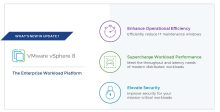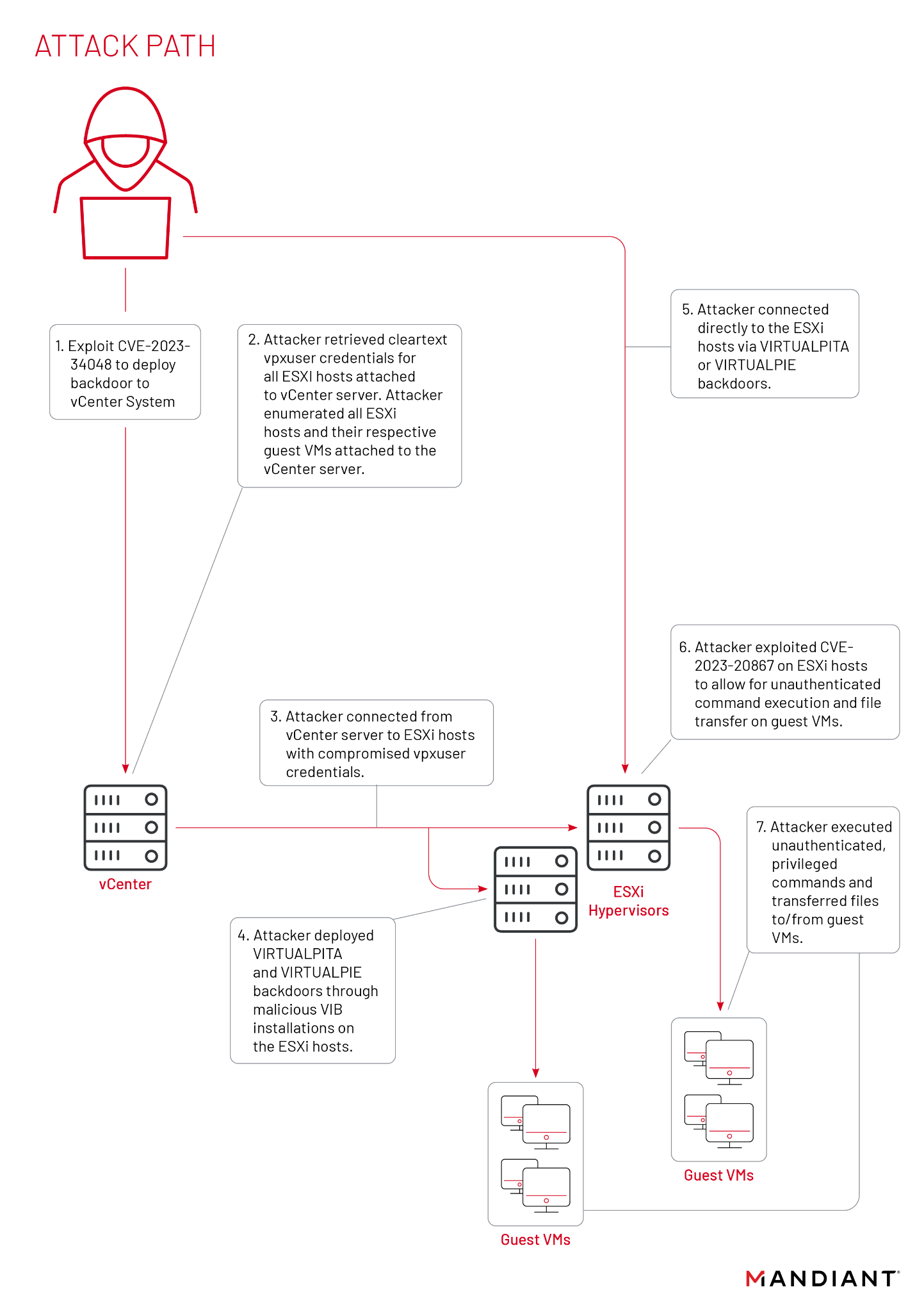VMware: Introducing vSphere 8 Update 1
Last year, VMware introduced vSphere 8, the enterprise workload platform for traditional and next-generation applications, and it became generally available in November 2022. Today, we are excited to announce the vSphere 8 Update 1 release. With this release, customers benefit from enhanced operational efficiency for admins, supercharged performance for higher-end AI/ML workloads, and elevated security across the environment. vSphere 8 Update 1 is expected to reach initial availability later in this fiscal quarter ending in April, with general availability to follow, per our new release model.
vSphere 8 Update 1 delivers enhanced value for customers in 3 key areas.
 Enhance Operational Efficiency
Enhance Operational Efficiency
IT admins are required to do a lot of repetitive tasks to maintain their environment. Host and cluster configuration, updates, and upgrades are vital to the ongoing health of infrastructure, yet they can take valuable time and resources away from running mission-critical workloads. With the Update 1 release, vSphere 8 adds additional capabilities for reducing operational burdens and improving efficiencies. A few key ones are discussed below:
- VMware vSphere® Configuration ProfilesTM – This capability was introduced in vSphere 8 as a technology preview and will become generally available and fully supported with Update 1. Manual work and time spent by administrators are significantly reduced by simplifying host lifecycle management with a declarative model using a JSON file. Managing desired host configuration, compliance, drift remediation, and security standards can now be seamlessly accomplished at a cluster level. When a new cluster is created, the host configuration can be easily copied for the entire cluster.

- Integration of VMware SkylineTM Health DiagnosticsTM with VMware vCenter®: Skyline Health Diagnostics is VMware’s self-service diagnostic platform. It helps admins diagnose issues, resolve failures, and schedule and run health checks automatically. Admins can use this tool for troubleshooting issues before contacting support. With Update 1, Skyline Health Diagnostics will become integrated with vCenter, making it easily accessible to admins. This integration will help save time and improve workload, ESXi, and vCenter availability.
- Heterogenous vGPU Profiles on the same GPU: With Update 1, vGPUs on the same physical GPU can now be assigned different application types – VDI (Virtual Desktop Infrastructure), compute, graphics, etc. This will help admins improve GPU utilization, reduce workload fragmentation in GPUs, and reduce costs.

- vSphere Green Metrics: vSphere 8 introduced vSphere Green Metrics, which helps admins track power consumed by workloads and infrastructure operations at a host level. In Update 1, we have enhanced this feature by providing VM-level power consumption. Admins can now monitor and optimize workload power consumption at a VM level and help contribute to their organization’s Environmental, Social, and Governance (ESG) goals.
Supercharge Workload Performance
Organizations are facing growing challenges in improving AI/ML workload performance. AI/ML workload sizes are increasing continuously and utilize an ever-increasing number of GPUs. This demand for GPUs is growing explosively.
- Support for NVIDIA NVSwitch: With Update 1, vSphere 8 dramatically speeds up AI/ML application performance with support for NVIDIA NVSwitch (up to 900GB/s bidirectional speed with NVLink on Hopper), which connects up to 8 GPUs per host and up to 8 GPUs to the same VM.

Elevate Security
Organizations today are faced with increased security risks. Maintaining security can be time-consuming. vSphere has several inbuilt security features, and with Update 1, the security of mission-critical workloads is enhanced with the following capabilities:
- Okta Federated Identity Management for vCenter: Update 1 expands vCenter support for 3rd party identity providers to Okta, in addition to Active Directory, OpenLDAP, and Active Directory Federation Services (ADFS). Admins using Okta can log in once for both vCenter and NSX Manager. Multi-factor authentication with Okta can also be enabled. This capability improves both efficiency and security for customers’ environment.
- Support for Fault Tolerance of VMs Employing vTPM: Fault Tolerance provides continuous availability for a VM by maintaining an identical VM that can quickly failover in the event of a failure. Fault Tolerance for a VM employing a vTPM module is now supported. This capability helps admins achieve continuous availability and security for mission-critical VMs.

- ESXi Quick Boot Support on Servers with TPM 2.0 Chips: Quick Boot is used in lifecycle management activities like patching, upgrades, etc., and saves considerable time. With update 1, TPM 2.0 does not need to be disabled for Quick Boot. Hence, this enhancement saves both life cycle management time for the admins and eliminates security gaps.


Next Steps
This article highlights the key capabilities in this update, but there are many more enhancements to learn about.
Ready to get started on your journey with vSphere? Check out these helpful resources:
- Visit vsphere.com
- Read the vSphere 8 Update 1 Technical Overview Blog
- Get the vSphere Free Trial

